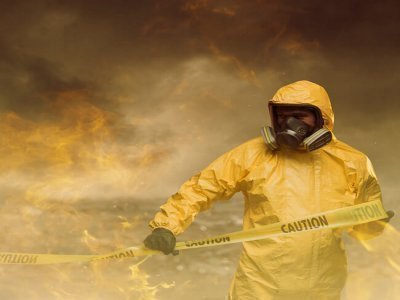Dangerous Goods - Prevention Cheaper Than Cure
The recent, huge West Footscray fire in Victoria triggered a “WorkSafe and EPA blitz” in the area of the blaze. To date, WorkSafe report they have visited 78 sites and have issued 68 Improvement Notices in relation to the handling and storage of dangerous goods. However, the blitz continues and the number of Notices will rise. This raises a question for all of you – are you absolutely sure that potentially dangerous chemicals are being stored correctly at your premises? The storage and handling of Dangerous Goods can be complex and have significant implications for your organization if controls are inadequate. JTA can provide expert advice.
The number of Notices issued has been labelled a “disappointing” result according to WorkSafe Regional Operations Manager Ian Matthews. He explained that most of the sites visited tended to have smaller amounts of chemicals on site, and the issues had been around the storage and handling of those, rather than the quantities they stored. So whilst sites may have been compliant, those with poor dangerous good storage practices attracted multiple notices requiring them to correct various issues.
Feedback from some of those Companies visited tells us there has also been a focus on emergency response plans, contact details, wardens, segregation, chaining of bottles (lpg, oxy, acetylene) as well as asbestos.
Improvement Notices Were Issued For:
- Inadequate placarding or labelling
- Incompatible storage
- Poorly maintained dangerous goods manifests
- Lack of fire protection reports.
Years ago a medium sized manufacturing plant in a Melbourne suburb, employing some 20 people, was literally burnt to the ground by a chemical fire diagnosed as due to poor segregation and separation of incompatible dangerous goods. Luckily there were no casualties as the fire started after work had ceased for the day.
The fire may or may not have been covered by insurance given the circumstances. However, regardless of insurance, perhaps due to the loss to production and other indirect factors, the cost of the fire crippled the company financially. This is a classic example of where an ounce of prevention is worth a tonne of repair.
The joint EPA WorkSafe inspections in Victoria are part of a wider program of 500 strategic Dangerous Goods inspections WorkSafe will conduct across the state this financial year. Some of those getting the visits who are being forced into preventative action by the issue of improvement or prohibition notices, may think they are unlucky. They may have been operating for many years without incident. It’s also a fact that serious dangerous goods incidents are low probability events and they lack prominence in the corporate memory or financial priorities. However, risk has another dimension - the severity of the consequences.
Dangerous Goods incidents, as those of us old enough to remember the Butler fire, Longford explosion, Coode Island and many smaller scale events, may not rate as high probability, but they can result in very high severity of consequences. For example: fire, explosion, death, serious injury, property damage, community disruption, pollution, reputational damage etc. So a bit of prevention can represent a bargain in terms of risk management expenditure.
A good approach to managing chemicals is to:
- Determine the maximum quantities to be stored and consider if elimination or substitution for smaller quantities or less hazardous chemicals can occur.
- Compare the maximum quantities with legislative limits for Placarding, Manifest and Fire Protection and consider separation and segregation issues.
- Ensure appropriate design of storage and handling areas, structures and equipment.
- Complete appropriate risk assessments
- Develop procedures and complete other legislated duties such as emergency plans, placarding, manifests and notifications as required.
- Provide training, signage and equipment to implement identified controls.
- Routinely inspect and audit chemical stores.
JTA can conduct audits detailing a clear process to meet compliance and support organisations through the complexities.









